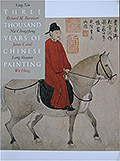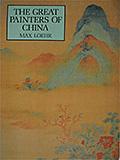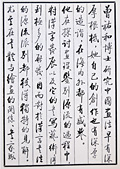Publications and reproductions
4. The historic experience
Literati made much of the connections between calligraphy and painting, this being one of the ways in which they distinguished their work from professional painters in particular. It is unfortunate that most modern scholarship tends to give separate accounts of these two pursuits, encouraged perhaps by the example of Western art history. We still await a comprehensive and unified account of these topics that reflects historic experience from the literati perspective.
Painting
- Wen C. FONG, contributor and editor
Images of the mind
Art Museum, Princeton University
In association with Princeton University Press, 1984.
A fine example of professional art history written to accompany selections from the Edward L. Elliott family and John B. Elliott collections of Chinese calligraphy and painting when shown at the Art Museum, Princeton University. Not only does Fong (方聞) take us through the chronological development of painting, he offers an unfolding theme, leading to the 'great synthesis' that was literati painting at the end of the Ming. Fong has returned to this history in later books, but this text from 1984 most convincingly combines passion with scholarship.
|
| | | |
- Richard BARNHART, YANG Xin, NIE Chongzheng, James CAHILL, LANG Shaojun, Hung WU
Three Thousand Years of Chinese Painting
Yale University Press, 1997
This begins with a long-ish account of earliest times, as there is much recent archaeological evidence to consider. Yang Xin's 'Introduction' is good on the aims of painting, and his 'Ming Dynasty' chapter is one of the best in the book, especially in the description of the competing schools of painting that flourished during this rich period.
| |  |
| | | |
- Max LOEHR
The Great Chinese Painters
New York: Harper & Row, 1980
A well-written brief introduction to major painters. Each painter is represented by one or two paintings about which Loehr writes in an elegant and conversational manner. A handsome combination of critical appreciation and scholarship.
| |  |
| | | |
Calligraphy | | |
- Wen C. FONG
'Chinese Calligraphy: Theory and History,' in The Embodied Image: Chinese calligraphy from the John B. Elliott Collection, (Robert E. Harrist, ed.)
Art Museum, Princeton University in association with Harry N. Abrams, 1999
Fong has also written one of the clearest short accounts of the appreciation and history of calligraphy. Read in tandem with his account of painting, this gives a good overview of the field as a whole.
| |  |
| | | |
- TSENG Yuho
A History of Chinese Calligraphy
Hong Kong: Chinese University Press, 1993
An influential artist, educator and scholar, Tseng approaches calligraphy in respect to styles and motives, selecting works from across the historic record and even (bravely) from calligraphy found in the street today. The final section on ink, brushes and other materials used by calligraphers is very sensitively written and illustrated. An earlier version of this book was given to Mao Zedong by Richard Nixon as America's official gift on the historic 1972 visit.
| |  |



